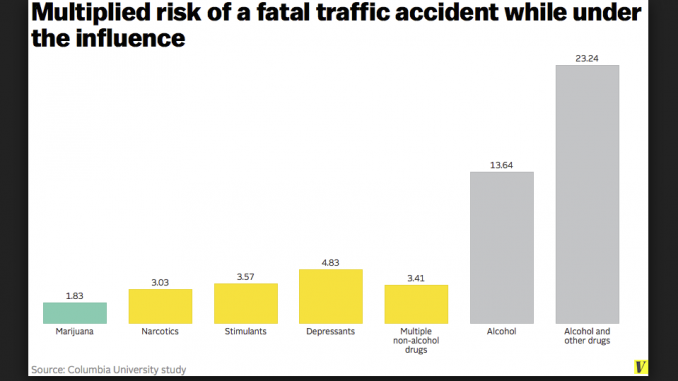
It’s worth taking a closer look at that 2015 NHTSA study, because federal officials put a lot of stock in it as “the first large-scale [case control crash risk] study in the United States to include drugs other than alcohol.” Data was collected from more than 3,000 crash-involved drivers and 6,000 control drivers (not involved in crashes) over a 20-month period in Virginia Beach, Virginia. The data was fresh and solid: Research teams responded to crashes 24 hours a day, 7 days a week. Drivers were considered THC-positive if they tested for active THC, not for non-impairing metabolites still in their blood days or weeks after consumption.
While THC-positive drivers were 5% more likely to be involved in a crash, the researchers found that drivers who’d taken an opioid painkiller had a 14% greater risk of crashing. Here’s a chart from that NHTSA study comparing THC (marijuana) with opioids (narcotic analgesics) and other drugs:
Those levels of increased risk were tiny, however, compared to the risk involved with alcohol. Drivers within the legal range of blood alcohol level as registered by a breathalyzer (BrAC) were found to be 20% to 222% more likely to be involved in a crash. At .08 BrAC, the legal limit, the risk increased to 293%. At 0.15 BrAC, drivers were more than 12 times (+1118%) more likely to be involved in a crash than a sober person.
By comparison, a driver who has taken penicillin is 25% more likely to be involved in a crash. Drivers carrying two or more passengers are 120% more likely to crash. Drivers using mobile phones to talk or text are 310% more likely to crash.
Taking Drugged Driving Seriously: What Does the Science Say?
